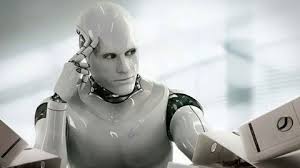Robots Taking Jobs
Many big companies have recently opted out for the traditional worker also known as humans, for a more metal-made employee known as a robot. Businesses like, Amazon, Gap, Staples and Crate & Barrel are all now employing robots to carry out duties that before were completed from warm-blooded people. The idea is simple but in order for a company to implement this robotic feature in their workplace, it’s a bit more complex than just throwing “robot bodies” in the field. It takes about 6 months and a lot of capital to employ these bots. The company that is making this a reality for businesses like Walgreens, GAP and Toys “R” Us, is Kiva Systems.
 Normally, products in warehouses are transported from point A to point B by humans in forklifts or by conveys. Kiva’s method is different where the goods don’t actually leave the storage racks. Instead, products are stored on portable storage units that are transferred via a robot worker. With a grid system installed in the floor, the robots are able to navigate throughout the distribution center delivering goods to their human co-workers.
Normally, products in warehouses are transported from point A to point B by humans in forklifts or by conveys. Kiva’s method is different where the goods don’t actually leave the storage racks. Instead, products are stored on portable storage units that are transferred via a robot worker. With a grid system installed in the floor, the robots are able to navigate throughout the distribution center delivering goods to their human co-workers.
Here’s how it works in layman’s terms. When an order comes in for particular product, a signal is sent to the robot. At that point, the robot steers itself over to the mobile unit based on data it receives from the grid in order to fulfill that assignment. Then the robot drives under the rack and picks it up and transports it to the appropriate area. Knowing the size of these facilities and the amount goods that go in and out of these places on a daily basis, this is certainly an investment worth entertaining.
Speaking of investment, the start-up cost involved adding these robots to your payroll will set a small company back roughly $2 million. For the larger companies like Amazon, it can cost upwards of $20 million. However, for this you can employ 1,000 robots in one distribution center just as Staples does. Kiva makes two types of robot model. Other than the difference with dimensions and power, the amount they are able to lift is what differentiates them. The smaller version is capable of lifting up to 1,000 lbs. and the larger model can carry loads up to 3,000 lbs. Kiva’s approach to delivering products around is definitely a more efficient process versus the conventional procedure of having humans fumble throughout the floors searching items.
Robots Making Jobs
So now you ask, how can having additional robots in our public spaces really enhance the employment rate? Simple! Humans build robots. As more and more robots are being built, that an indicator that work is being carried out by us. A recent study conducted Metra Martek, a marketing firm, concluded that 1 million industrial robots currently in operation are directly responsible for creating 3 million human jobs. Looking ahead, over the next 5 years, robots will create another 1 million jobs for us.
Between 2000 – 2008, manufacturing employment rose in nearly every industrialized country, even as the use of robotics increased dramatically. This same pattern is now being seen in China, Brazil and other emerging countries as they rapidly increase their use of robotics. In Brazil, the number of robots almost increase nearly 400% during the study, with both production and job growth rising over 20%.
This study confirms that manufacturing employment is brighter in countries that continue to advance their robot investments. The report’s author, Peter Gorle, also points out three crucial areas of growth in robotic deployment: Robots that perform tasks that would be considered unsafe for humans, robots that carry out jobs that would not be economically doable in a high wage economy and robots that carry out work that humans can’t possibly do.
Conclusion
Robots are our future and our future is robots. The demand for robots is in high gear with no plans of breaking. The Federal Government has also jumped on the bandwagon. In November 2011, it announced they were giving $344 million to fund researchers of robotics from around the globe. This funding is for robot lizards, which is a robots that can run at high-speed and more importantly, run up and down walls.
On the flip side, people will be effected by robots entering the workplace. It common sense that when companies hire robots to perform human jobs, that means the person who was filling that position isn’t needed anymore. The impact of what happens next will vary from each business based on the way they are structured. There’s always the possibility to transfer within another department or relocate to another facility. However, at the end of the day, don’t think you can work smarter and faster than a robot because you can’t. Robots don’t have stamina, don’t need breaks and they don’t carry all the extra baggage humans create (i.e. taxes, 401k, unemployment, lawsuits, injury, gossip etc.)
At the end of the day, this news is a good thing for our job market. At least until robots are able to build themselves. Then, we’ve got a major problem!






Leave A Comment
You must be logged in to post a comment.